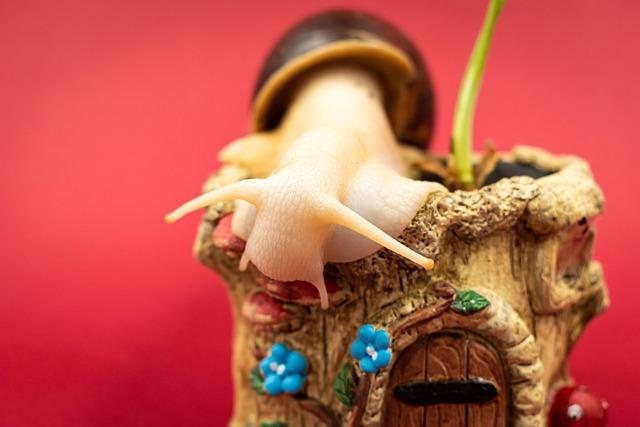In a startling development, the coastal state of Goa is facing an ecological challenge as Giant African snails have been reported to invade the region. Known for their rapid reproduction and voracious appetite, these invasive mollusks pose a significant threat to local agriculture and biodiversity. Experts warn that if left unchecked, the proliferation of Giant African snails could disrupt the delicate balance of Goa’s ecosystem, causing widespread environmental and economic repercussions. Authorities are now mobilizing efforts to contain the spread and mitigate potential damage.
Giant African Snails Rapidly Spread Across Goa’s Ecosystems Raising Alarms
The invasion of Giant African Snails across various parts of Goa has raised significant concerns among ecologists and local authorities. These invasive mollusks, known for their voracious appetite, are rapidly altering the delicate balance of the region’s ecosystems. Their presence threatens native flora by consuming a wide range of plants, including agricultural crops, garden plants, and endangered species. Experts warn that if left unchecked, these snails could disrupt food chains, reduce biodiversity, and lead to severe economic losses in the agrarian sectors of Goa.
Efforts to contain the spread include coordinated surveillance, public awareness campaigns, and biological control measures. However, the snails’ prolific reproductive rates and adaptability present a formidable challenge. The table below summarizes key facts about the Giant African Snail’s impact and local response strategies:
| Aspect | Details |
|---|---|
| Reproduction | Up to 1,200 eggs per year |
| Diet | Over 500 plant species |
| Impact on agriculture | Crop damage up to 30% |
| Control methods |
|
Impact on Native Flora and Fauna Threatens Biodiversity Balance in Coastal Regions
The invasion of giant African snails in Goa has triggered alarming disruptions within local ecosystems. These mollusks feed voraciously on a wide array of native plants, including agricultural crops and horticultural species, leading to significant habitat degradation. As these snails multiply rapidly, they outcompete indigenous herbivores, threatening the delicate balance that coastal biodiversity depends on. The loss of native flora, in turn, diminishes shelter and nourishment sources for various fauna, pushing several endemic species toward a fragile existence.
Ecologists warn that unchecked proliferation of this invasive species could initiate cascading effects, destabilizing food webs and ecosystem services such as pollination and soil fertility. Key concerns include:
- Decline in native plant populations critical to coastal stabilization
- Reduced habitat quality for small mammals, birds, and insects
- Increased vulnerability of endangered fauna due to competition and habitat loss
| Impact | Affected Species | Consequences |
|---|---|---|
| Flora consumption | Coastal shrubs, native grasses | Habitat reduction, soil erosion |
| Competition | Local herbivores (snails, insects) | Population decline, food scarcity |
| Predator-prey imbalance | Birds, small reptiles | Altered hunting patterns, reduced prey |
Experts Urge Immediate Containment Measures and Public Awareness to Mitigate Damage
Environmental specialists emphasize an urgent need for coordinated containment efforts to halt the rapid spread of giant African snails across Goa. These invasive mollusks, known for their voracious appetite, threaten native biodiversity and agricultural stability. Experts recommend immediate actions such as physical removal, monitoring snail populations, and limiting human activity in affected zones to prevent further ecological imbalance.
Public participation is critical in combating this menace. Authorities urge residents to follow simple preventive measures, including:
- Regularly clearing gardens of debris and potential snail habitats
- Reporting sightings to local environmental agencies
- Avoiding the transportation of plants or soil from infested areas
| Containment Strategy | Effectiveness | Timeframe |
|---|---|---|
| Manual Removal | High | Ongoing |
| Public Awareness Campaigns | Moderate | Immediate |
| Chemical Control | Low (Environmental Risk) | Selective Use |
To Wrap It Up
As the Giant African snails continue their relentless spread across Goa, experts warn that urgent coordinated action is imperative to prevent irreversible damage to the region’s delicate ecosystems. With agriculture and native biodiversity facing significant threats, authorities must prioritize monitoring and containment efforts to safeguard the state’s ecological balance. The unfolding situation serves as a stark reminder of the profound impact invasive species can have, underscoring the need for heightened awareness and proactive measures in protecting Goa’s natural heritage.
